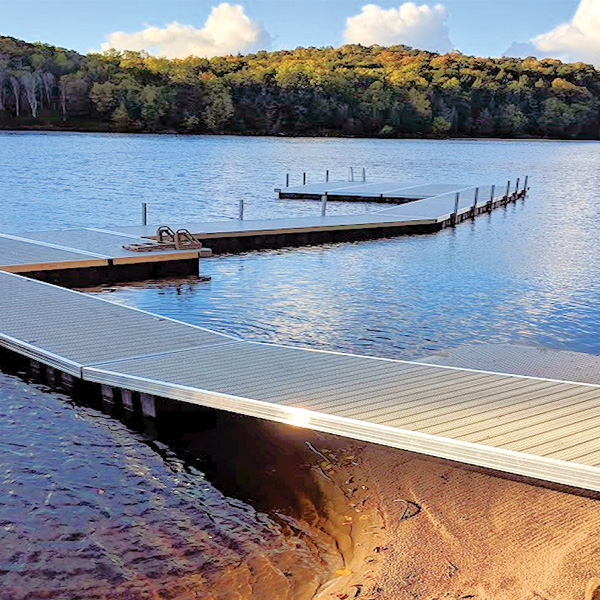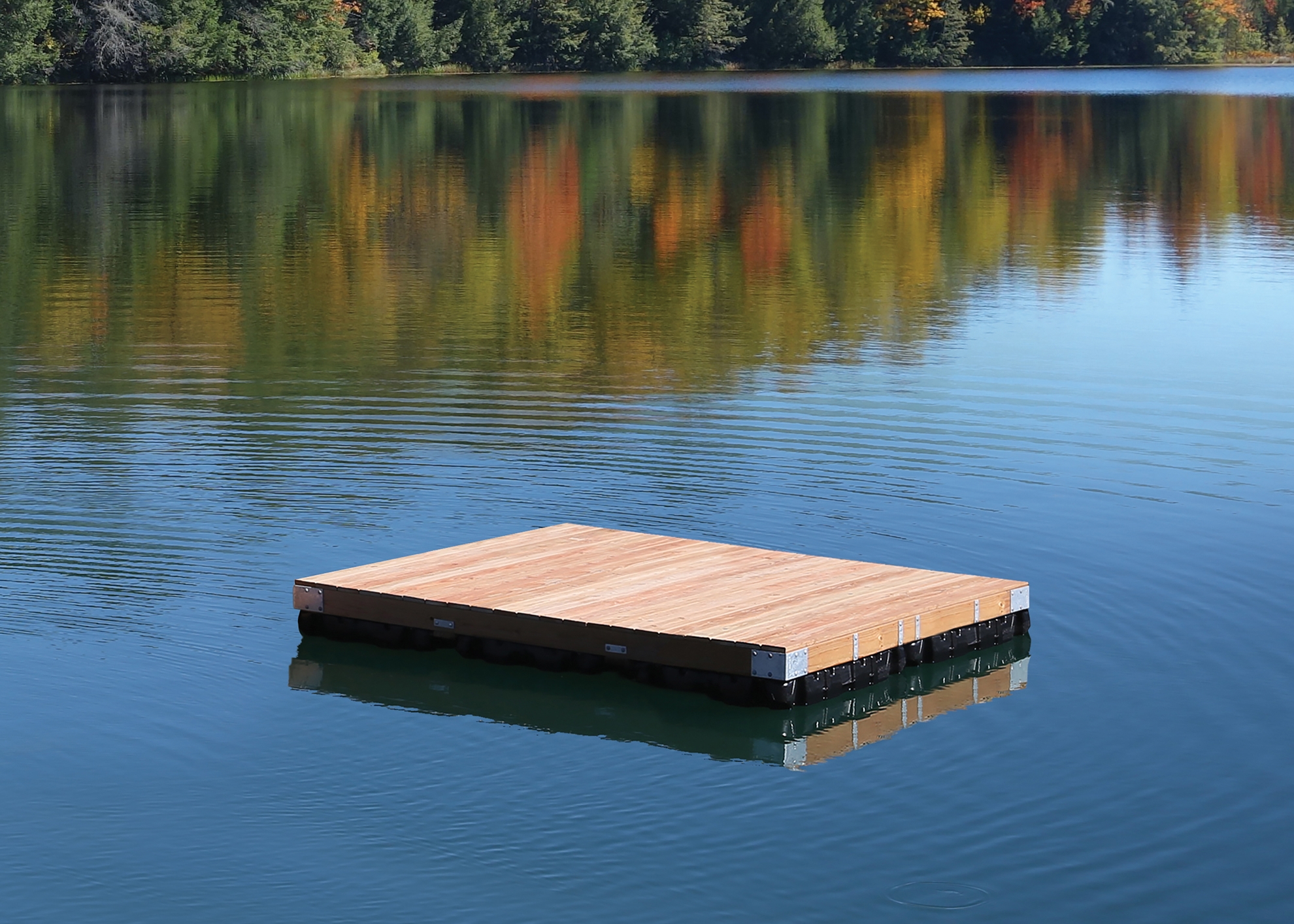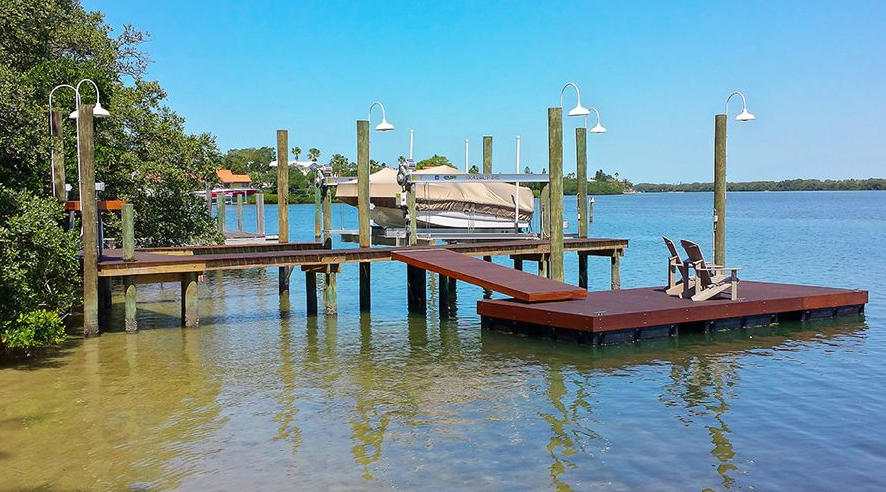Floating Docks: The Smart Choice for Modern Waterside Living and Leisure
Floating Docks: The Smart Choice for Modern Waterside Living and Leisure
Blog Article
Upgrade Your Beachfront With Long Lasting Floating Docks
Updating your waterside with resilient floating docks can considerably enhance both capability and appearances, supplying a versatile remedy for different water activities. These frameworks are developed to adjust to rising and falling water levels, making certain security and accessibility throughout the periods. With a variety of products offered, consisting of low-maintenance choices and traditional wood, choosing the right dock can enhance your personal design and fulfill useful demands. Comprehending the subtleties of setup and upkeep is essential for making certain longevity and performance. What variables should you consider when making this financial investment?
Advantages of Floating Docks
Floating docks offer a wide variety of benefits that enhance their appeal for various maritime applications. Unlike standard set docks, floating docks surge and loss with the tide, making certain constant availability for boats and watercraft no matter of ecological problems.
Furthermore, floating docks are less complicated to mount and move, providing versatility for short-lived or seasonal usage. Their modular layout enables customization to fit certain needs, whether for personal marinas, residential watersides, or commercial applications.
Furthermore, floating docks create very little disruption to the aquatic atmosphere, maintaining regional communities and lowering the likelihood of erosion. They additionally provide enhanced security and security for customers, as their buoyant nature provides a much more flexible surface area than inflexible structures.
Additionally, floating docks can assist in a varied array of activities, such as fishing, swimming, and recreational boating, making them a useful property for beachfront growth. Their versatility and functionality make floating docks a favored option for a range of naval tasks.
Picking the Right Products
Picking ideal products for floating docks is essential to their longevity, performance, and overall effectiveness. When choosing materials, consider aspects such as ecological exposure, maintenance demands, and structural integrity. Typical materials include wood, plastic, aluminum, and composite options, each offering distinct benefits and disadvantages.
Timber, while cosmetically pleasing, needs routine maintenance to avoid rot and decay. Pressure-treated timber can boost durability, but it might still succumb to water damages with time. Plastic drifts, typically made from high-density polyethylene, are resistant to corrosion and call for very little upkeep, making them an attractive choice for low-maintenance applications.
Light weight aluminum is an additional feasible choice, known for its toughness and light-weight properties. It is immune to corrosion and can stand up to extreme weather, although it might be a lot more expensive than other products. Compound materials combine the ideal characteristics of wood and plastic, providing a durable and low-maintenance option that resembles the appearance of wood without the connected drawbacks.
Eventually, the selection of product ought to straighten with the intended usage, environmental factors to consider, and budget restrictions, guaranteeing a sturdy and practical floating dock page that meets your certain demands.
Setup Refine Overview
The successful installment of a floating dock depends on careful planning and implementation, guaranteeing that it runs effectively in its designated setting. The very first step entails evaluating website conditions, including water deepness, coastline features, and prevailing climate patterns, which will inform the dock layout and anchoring system.
Following the site evaluation, the following stage is to prepare the floating dock components. This includes setting up the structure, safeguarding floats, and attaching any type of needed equipment. It is crucial to ensure that all connections are robust and water-resistant to stand up to aquatic problems.
As soon as the dock is constructed, the installation procedure commences with positioning the dock in the water. This can involve a crane or other lifting equipment, especially for bigger structures. Correct placement is essential for functionality and safety.

Maintenance Tips for Long Life
Routine upkeep is vital for ensuring the long life and ideal efficiency of a floating dock. To attain this, begin with regular assessments at least two times a year, focusing on the honesty of the dock's structure, consisting of the flotation protection gadgets and attaching hardware. Search for indications of rust, damages, or wear, and address any type of concerns promptly to stop more degeneration.
Cleansing is another vital facet of maintenance. Eliminate particles, algae, and barnacles from the dock's surface area to prevent slippery problems and keep aesthetic charm. Utilize a mild detergent and a soft brush to prevent damaging the dock's materials.
Additionally, guarantee that the dock is effectively secured and secured to hold up against seasonal changes in water degrees and weather. Check the anchoring system for security and make adjustments as essential.
Enhancing Your Outside Aesthetic
To develop a visually enticing outside room, integrating a drifting dock can considerably boost the general visual of your waterside residential property. Floating docks are not just useful yet can likewise act as a striking prime focus that complements the natural environments - floating dock services. Readily available in different products and styles, you could look here these docks can be tailored to match your building's building design and landscape
The addition of decorative elements, such as incorporated lights or stylish barriers, better raises the dock's visual allure. Take into consideration making use of natural wood coatings, which blend perfectly find out with the environment, or going with contemporary materials like light weight aluminum or composite outdoor decking that provide a sleek, modern look.
Purposefully putting planters or seating areas on or around the dock can develop inviting spaces that urge relaxation and enjoyment of waterside views. In addition, integrating shades and structures that harmonize with your landscape will certainly create a natural visual throughout your outdoor location.

Conclusion

Updating your waterfront with durable floating docks can considerably enhance both capability and visual appeals, supplying a versatile option for various water tasks. Unlike traditional set docks, floating docks rise and loss with the trend, ensuring regular accessibility for boats and boat no matter of environmental problems.Picking ideal materials for floating docks is important to their long life, efficiency, and overall efficiency.As soon as the dock is assembled, the setup process starts with placing the dock in the water.In recap, floating docks deal various benefits, consisting of adaptability to water level modifications and a range of product alternatives.
Report this page